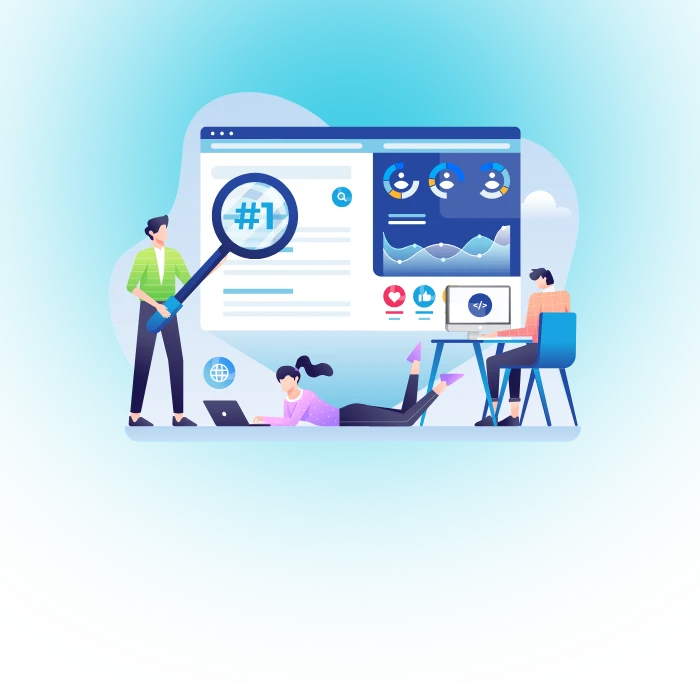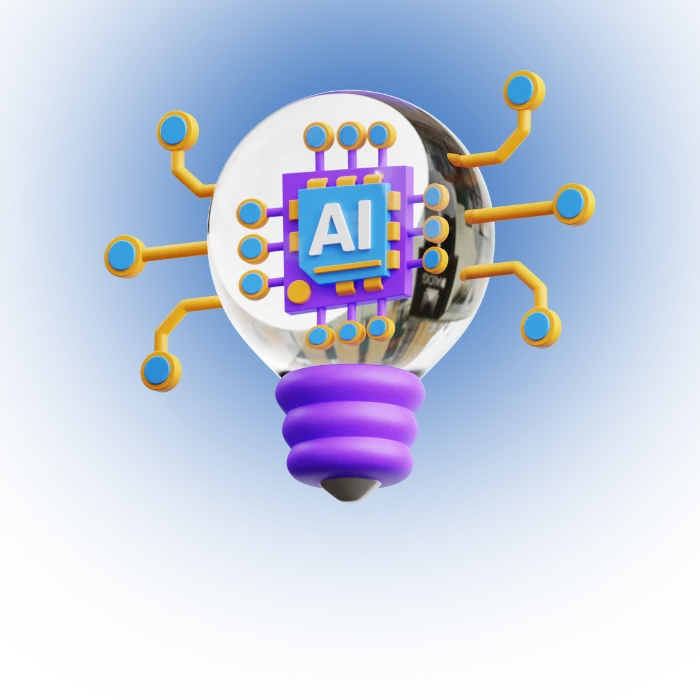Introduction
The healthcare industry is rapidly adopting new technologies like artificial intelligence (AI) and machine learning (ML) to improve patient outcomes and operational efficiency. AI and ML are playing a pivotal role in the development of mobile healthcare apps by providing more personalized, intelligent, and effective solutions. This blog post explores how AI and ML can be leveraged to build innovative mobile apps for the healthcare sector.
Evolution of Mobile Healthcare Apps
The use of smartphones and mobile apps in healthcare has grown exponentially over the past decade. Some early healthcare apps focused on general wellness by providing medication reminders, health tips, symptom checkers, and fitness tracking. However, as technology advanced, more patient-centric and specialized apps emerged. Apps like Babylon allow users to consult doctors through video calls. Others like Ada act as intelligent chatbots to offer preliminary diagnosis and health monitoring.
With AI and ML, mobile healthcare apps are becoming even more intelligent and personalized. They leverage the power of data and algorithms to derive contextual insights about patients. This is transforming passive apps into proactive health management tools. For instance, Jiio uses ML to analyze symptoms and recommends prevention steps in real-time. Such context-aware apps can alert doctors about potential risks and customize patient engagement accordingly.
Key Benefits of AI/ML in Mobile Healthcare Apps
Here are some of the key ways AI and ML enhance mobile healthcare apps:
Personalized Experience: Using techniques like natural language processing (NLP), apps can understand patient behavior and preferences to offer tailored solutions. It enables features like health coaches and symptom checkers to become more conversational and context-aware.
Predictive Analytics: Algorithms identify trends and patterns in patient data to make predictions about their health. Apps can forecast risks, onset of illnesses, adverse events, etc. to improve preventive care.
Early Diagnosis: Computer vision and image recognition techniques enable mobile apps to analyze medical scans and tests for preliminary diagnosis. It speeds up the detection of anomalies and decision-making.
Remote Patient Monitoring: Wearables capture real-time patient vitals and feed the data to apps. AI models continuously evaluate this to warn doctors about any deterioration or improvement in health.
Personalized Engagement: Chatbots and virtual assistants engage each patient differently based on their profile, needs, and communication style. They provide information, motivation, and support tailored to user preferences.
Improved Accessibility: Speech recognition, language translation, and gesture control make apps more accessible to disabled patients. It removes barriers to healthcare access.
As is evident, AI and ML are playing a transformational role in making healthcare mobile apps more intelligent, proactive, and customized. They have the potential to change how preventive care and patient engagement are delivered.
Use Cases of AI and ML in Mobile Healthcare Apps
Here are some examples of innovative AI/ML applications in healthcare mobile apps:
Babylon – Uses NLP for symptom analysis. Patients can text their symptoms and receive a preliminary diagnosis and next steps from their AI doctor.
SkinVision – Employs computer vision and deep learning to detect early signs of skin cancer by analyzing moles through smartphone cameras.
Ada – Functions as an intelligent chatbot to assess patient symptoms and provide health information 24/7 through a conversational interface.
Migraine Buddy – Logs details of headaches and identifies triggers by finding correlations in the data. It can predict migraine likelihood.
DeepMind Health – Leverages generative models to predict patient trajectories within 24 hours to help doctors preempt health deterioration.
Mental Health Support – Uses emotion/text analysis and speech recognition to identify signs of depression, anxiety, etc. Can provide motivation and coping tips unique to the patient.
Medication Reminders – Has built-in AI to understand patient medication routines and automatically tailor pill reminders and alerts to their preferences and needs.
Fitness Coaching – Employs ML to study exercise patterns and gives personalized fitness recommendations and real-time feedback through wearables.
Chronic Disease Management – Tracks vitals from wearables and uses ML to identify trends/flare-ups. Sends personalized tips to patients to better self-manage their chronic conditions.
Clinical Trials Support – Matches patients to relevant clinical trials using ML algorithms. Also uses AI chatbots to guide patients through trial protocols.
As is evident, AI and ML are playing a transformational role in making healthcare mobile apps more intelligent, proactive, and customized. They have the potential to change how preventive care and patient engagement are delivered.
Preparing Data for AI/ML Models in Healthcare Apps
Let’s deep dive into how developers can prepare quality training data to build accurate AI/ML models for healthcare apps:
Obtain sufficient labeled data – Thousands of examples are needed to train models well—source datasets from patients, hospitals, clinical trials, medical repositories, etc.
Diversity of data – Include data covering various demographics, medical conditions, diagnoses, symptoms, treatments, etc. to make models more robust.
Clean the data – Remove duplicates, errors, and inconsistencies in data through ETL tools before model training.
Anonymize data – Remove personally identifiable information from the data to maintain patient privacy.
Standardized formats – Structured (tabular data) as well as unstructured data (text, images, etc.) may need processing into standardized formats.
Label data – Manual work is required to label every data example with target variables like disease name, symptom type, etc. This helps in supervised learning.
Data augmentation – Since healthcare data is sensitive, its quantity is limited. Use techniques like transformation and synthesis to boost the data pool.
Split data – Divide data into training and test sets. Training data builds models, test data evaluates them. Follow the 70:30 ratio.
Weigh data – Balance data by giving more weightage to under-represented classes via techniques like over/under-sampling.
Update periodically – Keep incrementally adding new patient data to retrain and enhance model robustness.
Thorough data preparation is crucial to developing robust AI/ML models for accurate predictions in healthcare apps.
Testing and Retraining Models
Here are some best practices to test, re-evaluate, and retrain the AI/ML models powering healthcare apps:
Input edge cases – Test models with invalid, extreme, and misspelled input samples to see how they react.
Measurement Metrics – Measure precision, recall, accuracy, and confusion matrix to quantify model performance.
Error Analysis – Deep dive into cases where models underperform to identify gaps. Is it bad data, features, or algorithm limitations?
Model Enhancement – Based on insights from testing, try ensemble modeling and hyperparameter tuning to improve model architecture.
New Test Data – Evaluate models on an unseen dataset to check if it maintains performance across new data.
Active Learning – Where the model is unsure, get those cases manually labeled by a domain expert and add them to training data.
Monitoring Degradation – Check models periodically for any drops in performance due to concept drifts in new data.
Model Replacement – Sometimes older ML models need to be replaced with newer better-performing architectures.
Regular Retraining – As new data comes in, retrain models frequently to keep them relevant and accurate.
Rigorous testing and retraining are imperative to maintain optimal performance of AI/ML models as new healthcare app data keeps streaming in.
Integrating AI/ML Models into Healthcare Apps
Here are some key steps developers should follow to integrate trained ML models into the mobile healthcare app architecture:
Containerize models – Package trained models with dependencies into containers like Docker for easy portability and deployment.
Choose app backend – Host model containers on scalable cloud platforms like AWS SageMaker, Azure ML, or Google AI Platform.
Set up REST API – Expose the models as REST endpoints that the app UI can call with user inputs and parameters.
Encrypt data – Securely encrypt confidential patient data processed by the models. Follow HIPAA compliance.
Test API requests – Validate API requests and responses to ensure correct integration with the app frontend.
Monitoring – Continuously monitor API traffic, latency, and errors. Perform load testing.
Auto-scaling – Based on traffic patterns, enable auto-scaling of backend ML infrastructure to maintain performance.
Blue-green deployment – Launch model versions through the blue-green method. Route portion of traffic to test performance before complete rollout.
A/B testing – Test model versions with different segments of app traffic to see which one has better empirical outcomes.
Iterative updates – Frequently update models through CI/CD pipelines to improve robustness and accuracy.
Proper integration of AI models with app infrastructure enables low-latency, efficient inferencing to power smart healthcare apps.
Creating Interaction Flows in AI-Powered Healthcare Apps
Here are some tips for developers to design optimal interaction flows between users and AI models within the healthcare app:
Intuitive design – Ensure that UI components are intuitively placed for logical user flow. Follow usability heuristics.
Clear input – Provide clear instructions and error handling for entering patient details like symptoms. Use predefined templates to guide users.
Conversation design – Structure engaging conversational flows between users and chatbots powered by NLP models.
Explainable AI – Show relevant parts of model logic to increase trust and transparency.
Clarify limitations – Set the right user expectations on model capability to prevent over-reliance.
Summary output – Present model outputs through easily understandable visualizations like charts, graphs, and risk scores.
Follow-up recommendations – Suggest specific next steps the user should take based on model findings.
Personalized engagement – Customize communication style, notification frequency, and content for each user based on preferences.
Feedback capture – Allow users to flag wrong predictions and submit feedback through forms or conversations.
Continuous enhancement – Use feedback to retune models and enhance interaction flows.
Well-designed interaction flows improve usability and adoption of AI-powered features in healthcare apps.
Incorporating Additional Features in Healthcare Apps
Apart from AI/ML capabilities, some other key features that enrich healthcare apps include:
Booking and Telemedicine – Allow online doctor consultations via video/audio calls and appointments.
Electronic Health Records – Give users access to their medical history, lab reports, prescriptions, etc. in one place.
Medication Management – Provide medication reminders, refill tracking, pill identification, etc. to improve adherence.
Remote Monitoring – Enable tracking of vitals like BP, blood sugar, heart rate, etc. through IoT-integrated wearables.
Health Education – Include health tips, articles, blogs, and FAQs to increase awareness of diseases, nutrition, etc.
Social Support Groups – Offer forums where patients can connect with and support others facing similar health challenges.
Gamification – Introduce fitness challenges, health quizzes, badges, etc. to motivate users.
VR/AR – Incorporate immersive experiences around therapies, anatomy education, etc.
Data Security – Implement robust security like encryption, access controls, and audits to safeguard patient data.
These complementary features boost engagement, education, and motivation levels in healthcare apps.
Planning Incremental Improvements
Here are some ways developers can incrementally enhance their AI-powered healthcare apps:
Incorporate feedback – Regularly analyze ratings, reviews, and user feedback to identify areas of improvement.
Add new features – Prioritize and develop features that address user pain points and requirements.
Improve UI/UX – Keep refining app interface and experience through A/B tests and design sprints.
Monitor adoption – Track analytics like user retention, and feature usage to spot enhancement areas.
Address model gaps – Retrain models where they underperform by gathering additional training data.
Upgrade algorithms – Continuously evaluate the performance of ML models. Switch to better architectures when feasible.
Personalization – Identify population segments and customize the app experience to their needs.
Expand integrations – Integrate with new data sources like pharmacy systems, and genomic databases to boost model intelligence.
Watch industry trends – Stay updated on the latest advances in digital health and find ways to adopt in the app.
Security upgrades – Frequently enhance the security of the app and cloud infrastructure to mitigate evolving cyber threats.
By planning iterative improvements spanning models, features, design, and integrations, developers can make the app more well-rounded, intelligent, and robust.
Conclusion
In conclusion, AI and ML are enabling revolutionary use cases within mobile healthcare apps by making them more intelligent, personalized, and proactive. Adopting AI/ML best practices around clean data sourcing, robust model development, explainable interactions, and continuous enhancements can help developers build trustworthy and innovative apps. With healthcare access expanding to underserved communities using mobile, AI-powered apps are poised to drive tremendous impact by improving patient outcomes. They will continue to transform how preventive care and patient engagement are delivered.
FAQs
What is Artificial Intelligence (AI) in Healthcare?
AI in healthcare uses smart algorithms to analyze medical data, improve diagnostics, personalize treatments, and automate processes, making healthcare more accurate, efficient, and patient-centered.
How is Artificial Intelligence (AI) used in healthcare?
Artificial Intelligence (AI) in healthcare is used to improve diagnostics, personalize treatment, automate clinical workflows, and predict patient outcomes. AI analyzes medical images, detects diseases early, aids drug discovery, streamlines patient management, and supports remote care
What are the Benefits of Artificial Intelligence (AI) in Healthcare?
Artificial Intelligence (AI) in healthcare offers numerous benefits including faster and more accurate diagnosis, personalized treatment plans, and streamlined clinical workflows.
AI reduces healthcare costs by enabling early disease detection, improving patient management, and automating administrative tasks.
What are the challenges of implementing Artificial Intelligence (AI) in healthcare apps?
AI in healthcare apps faces challenges like data privacy, system integration, bias, regulations, trust deficits, data variability, skills gaps, and ethics, requiring strong governance and training for success.
Who are the leading companies in the Artificial Intelligence (AI)healthcare mobile app market?
Leading companies in the AI healthcare mobile app market include notable specialized players like Ada Health, Babylon Health, Your.MD, Sully.ai, and HealthifyMe.






